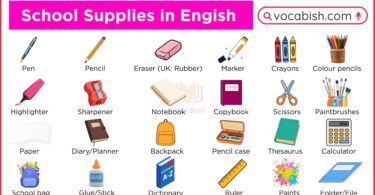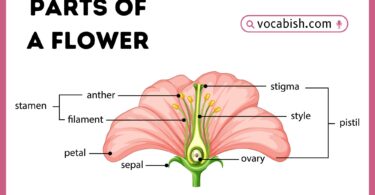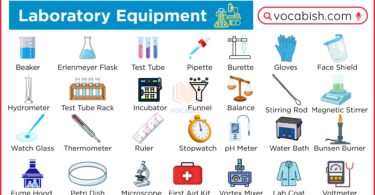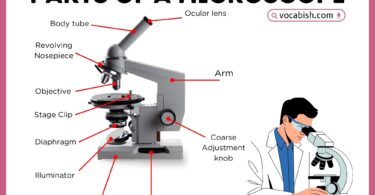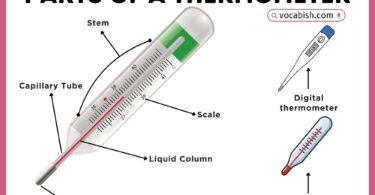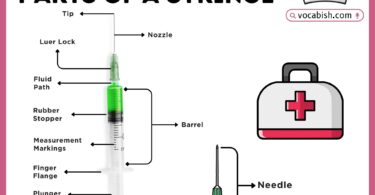In our world, everything we see can be grouped into living and non-living things. Knowing the difference helps us understand nature, science, and the environment better. In this blog post, you will learn what makes something alive or not, with simple definitions and 150+ examples shown in an easy chart. This topic is great for learners who want to build clear basic knowledge about the world around them.
Living Things Meaning
Living things are the ones that breathe, grow, move, reproduce, and need food and water to survive. They can feel changes in their surroundings and respond to them.
Examples of living things:
Key features of living things:
- They breathe air.
- They grow with time.
- They can reproduce (make babies or new plants).
- They need food and water.
- They can move or respond to touch or light
Non-Living Things Meaning
Non-living things do not grow, breathe, or need food. They do not move on their own and have no life in them.
Examples of non-living things:
- Chair
- Car
- Water
- Pencil
- Stone
- Table
Key features of non-living things:
- They do not breathe.
- They cannot grow or move by themselves.
- They don’t need food or water.
- They do not reproduce.
Differences Between Living and Non-Living Things
| Features | Living Things | Non-Living Things |
|---|---|---|
| Growth | Yes, they grow. | No growth. |
| Breathing | They breathe air. | No breathing. |
| Movement | Can move on their own. | Cannot move by themselves. |
| Reproduction | Can reproduce. | Cannot reproduce. |
| Need for food | Yes, they need food. | No, they don’t need food. |
| Response to surroundings | They react and feel. | No response at all. |
List of 150+ Living and Non-Living Things
Examples of Living Things
| Human | Dog |
| Cat | Elephant |
| Fish | Bird |
| Cow | Horse |
| Frog | Butterfly |
| Tree | Rose |
| Mango plant | Grass |
| Mushroom | Ant |
| Bee | Lion |
| Tiger | Rabbit |
| Sheep | Monkey |
| Deer | Hen |
| Duck | Parrot |
| Eagle | Whale |
| Octopus | Snake |
| Crocodile | Rat |
| Spider | Fox |
| Zebra | Panda |
| Kangaroo | Bear |
| Goat | Donkey |
| Camel | Dolphin |
| Penguin | Turtle |
| Crab | Shrimp |
| Starfish | Pigeon |
| Sparrow | Peacock |
| Wolf | Lizard |
| Bat | Mosquito |
| Fly | Snail |
| Worm | Leaf |
| Seed | Flower |
| Shrub | Bamboo |
| Cactus | Apple tree |
| Palm tree | Corn plant |
| Potato plant | Onion plant |
| Tomato plant | Rice plant |
| Sunflower | Tulip |
| Lily | Pepper plant |
| Bean plant | Coconut tree |
| Pine tree | Orange tree |
| Banana plant | Mint plant |
Examples of Non Living Things
| Rock | Roller |
| Chair | Tape |
| Table | Glue |
| Car | Nail |
| Bicycle | Screw |
| House | Hammer |
| Computer | Saw |
| Television | Drill |
| Smartphone | Screwdriver |
| Book | Wrench |
| Pencil | Pliers |
| Pen | Stapler |
| Desk | Paperclip |
| Lamp | Staple |
| Clock | Rubber band |
| Door | Eraser |
| Window | Sharpener |
| Brick | Calculator |
| Glass | Ruler |
| Mirror | Compass |
| Plate | Protractor |
| Fork | Globe |
| Spoon | Map |
| Knife | Globe |
| Cup | Chessboard |
| Bowl | Chess pieces |
| Pot | Deck of cards |
| Pan | Dice |
| Oven | Puzzle |
| Refrigerator | Rubik’s cube |
| Microwave | Lego bricks |
| Toaster | Building blocks |
| Blender | Toy car |
| Washing machine | Action figure |
| Dryer | Doll |
| Vacuum cleaner | Teddy bear |
| Broom | Toy airplane |
| Mop | Toy train |
| Bucket | Kite |
| Sponge | Balloon |
| Towel | Ball |
| Pillow | Frisbee |
| Blanket | Jump rope |
| Mattress | Hula hoop |
| Rug | Skateboard |
| Carpet | Roller skates |
| Curtains | Surfboard |
| Wallpaper | Snowboard |
| Paint | Ski |
| Brush | Sled |
Living and Non-Living Things Chart
| Living Things | Non-Living Things |
|---|---|
| Human | Chair |
| Dog | Table |
| Cat | Book |
| Elephant | Car |
| Fish | Bus |
| Bird | Road |
| Cow | Wall |
| Horse | Building |
| Frog | Laptop |
| Butterfly | Mobile |
| Tree | Television |
| Rose | Fan |
| Mango plant | Light bulb |
| Grass | Bottle |
| Mushroom | Clock |
| Ant | Mirror |
| Bee | Pen |
| Lion | Pencil |
| Tiger | Eraser |
| Rabbit | Bag |
| Sheep | Cup |
| Monkey | Plate |
| Deer | Spoon |
| Hen | Knife |
| Duck | Door |
| Parrot | Window |
| Eagle | Bed |
| Whale | Toy |
| Octopus | Computer |
| Snake | Camera |
| Crocodile | Boat |
| Rat | Ship |
| Fox | Train |
| Zebra | Bicycle |
| Panda | Helmet |
| Kangaroo | Shoes |
| Bear | Ball |
| Goat | Net |
| Donkey | Water |
| Camel | Air |
| Dolphin | Fire |
| Penguin | Ice |
| Turtle | Sand |
| Crab | Soil |
| Shrimp | Cloud |
| Starfish | Mountain |
| Pigeon | River |
| Sparrow | Sea |
| Peacock | Lake |
| Wolf | Bridge |
| Lizard | Statue |
| Bat | Key |
| Mosquito | Coin |
| Fly | Rope |
| Snail | Drum |
| Worm | Guitar |
| Leaf | Watch |
| Flower | Calendar |
| Bamboo | Glass |
| Cactus | Carpet |
| Palm tree | Table lamp |
| Sunflower | Dustbin |
| Tulip | Plate |
| Lily | Door mat |
| Bean plant | Chain |
| Coconut tree | Bag pack |
| Pine tree | Flag |
| Orange tree | Road sign |
| Banana plant | Jewellery |
| Mint plant | Bottle cap |
Living things have life — they grow, breathe, and move.
Non-living things have no life — they cannot grow or breathe.
- A tree is a living thing because it grows and makes food.
- A rock is a non-living thing because it stays the same forever.
Why It’s Important to Know This
Learning the difference between living and non-living things helps us understand nature, protect the environment, and respect all forms of life. It also builds our science knowledge and helps us describe the world around us more clearly.
In short:
- Living Things: Grow, breathe, move, and need food and water.
- Non-Living Things: Do not grow, move, or need food and air.
FAQs
What are living and non-living things?
Living things grow, breathe, move, and reproduce, while non-living things do not grow, breathe, or need food.
How can I identify living things?
Living things can grow, move, reproduce, and respond to their surroundings, unlike non-living things.
Can non-living things change over time?
Non-living things may change physically but do not grow, breathe, or reproduce like living things.
Why is it important to know living and non-living things?
Understanding them helps students learn nature, science, and the environment more clearly and build vocabulary.
Where can I find examples of living and non-living things?
You can find 150+ easy examples in charts and lists, including animals, plants, objects, and natural elements.
Read More





